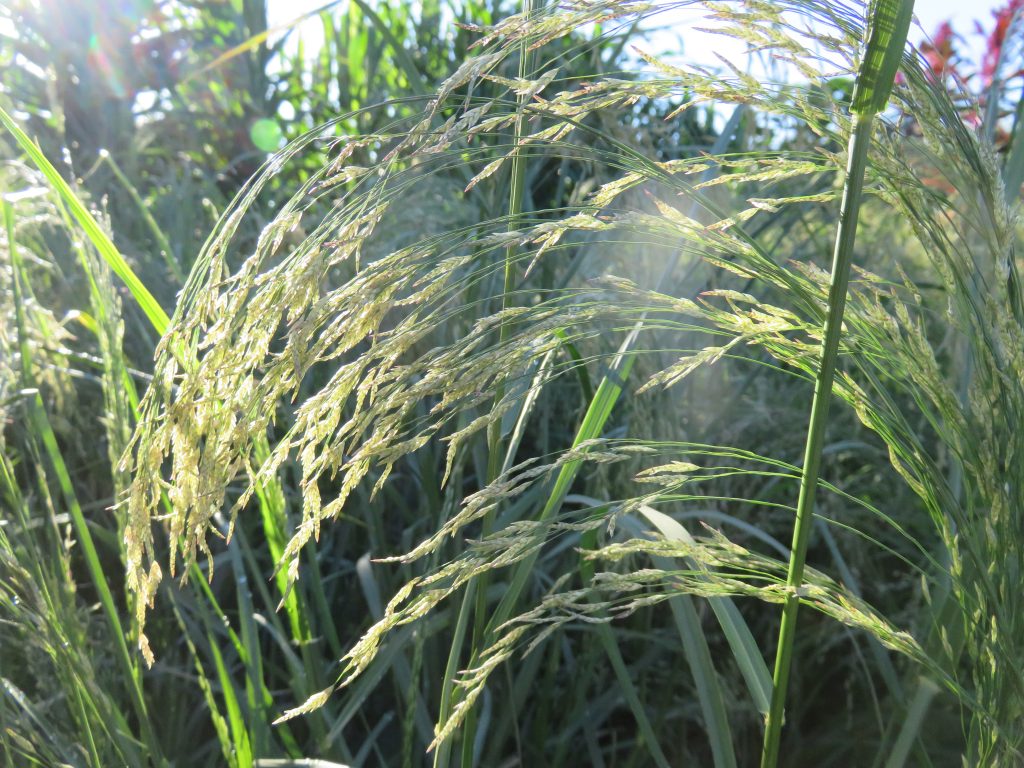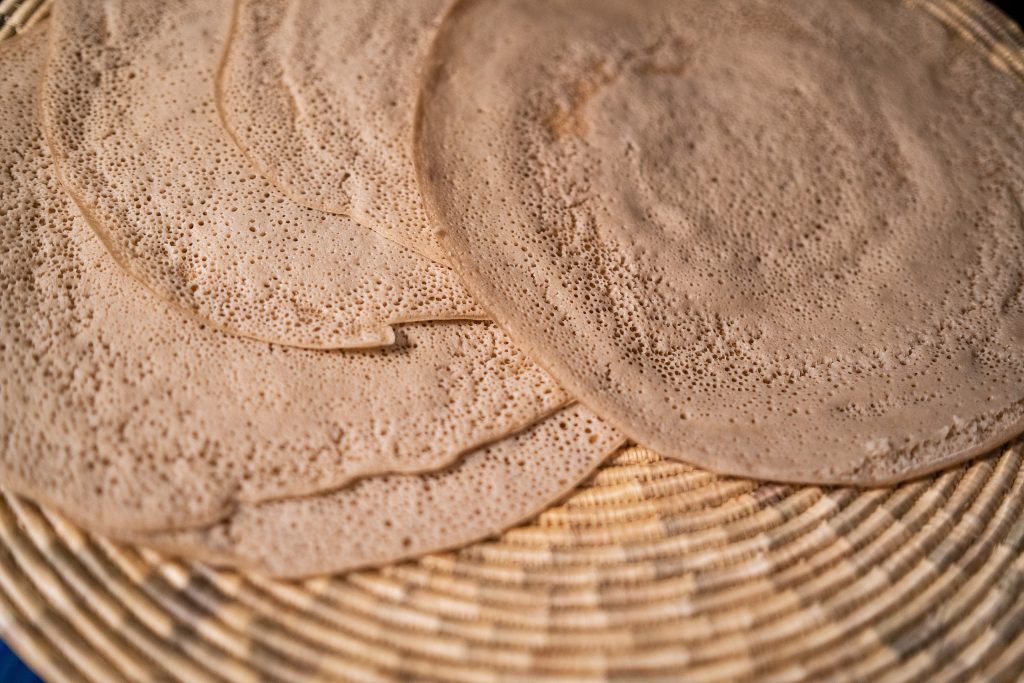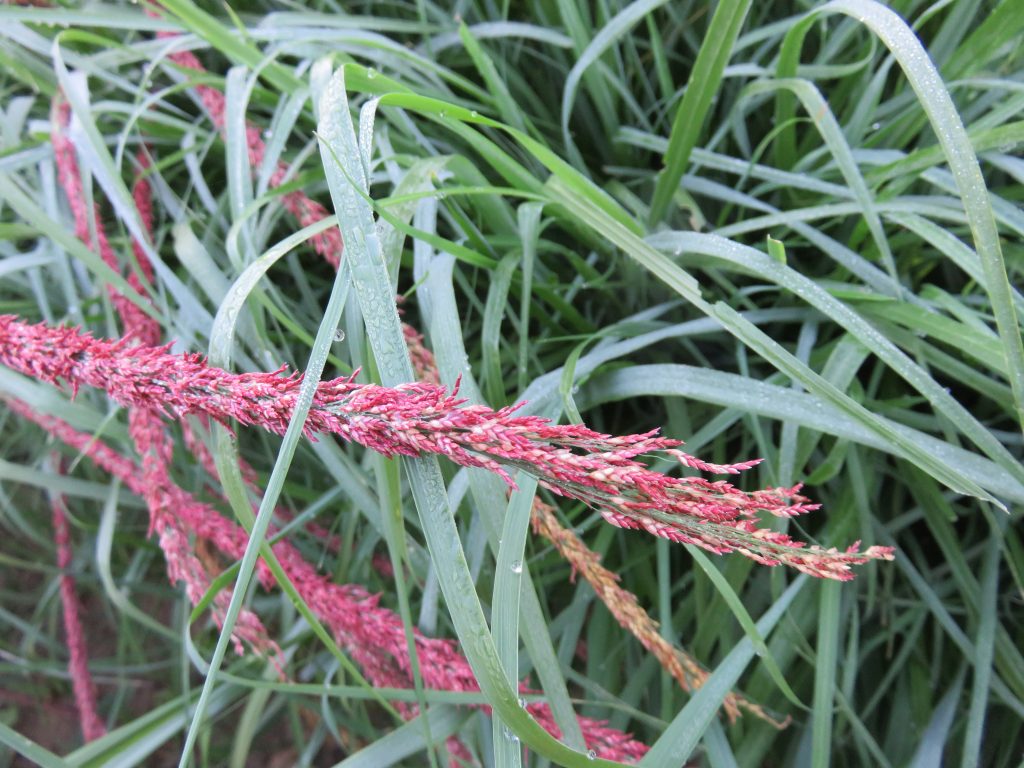Teff (Eragrostis tef)
Patrick Byrne
Colorado State University, Fort Collins, Colorado 80523
Corresponding author: patrick.byrne@colostate.edu
OUTLINE
- Overview
- Origin and domestication
- Production and use
- Conservation and breeding
- Export ban
- References
- Chapter information
1. OVERVIEW
Teff (Eragrostis tef), also known as tef and t’ef, is an ancient grain of Ethiopia and Eritrea, where it is highly valued for its climate resilience and culinary uses. It is an annual, self-pollinated C4 member of the grass family (Poaceae), an allotetraploid with 20 chromosome pairs (Girma et al., 2018). Teff is grown for its extremely small seeds (about 1 mm in diameter), as well as the straw that is fed to livestock. Seeds are generally borne in a loose, drooping panicle, but types with a more compact, erect inflorescence are also known (Woldeyohannes et al., 2022). Seed color ranges from white to dark brown, with white being the preferred color (Woldeyohannes et al., 2022). The main use of teff grain is to make injera, the flat spongy bread that is the mainstay of the Ethiopian diet. Outside Ethiopia, teff has become valued as a gluten-free, nutrient rich cereal, especially for persons allergic to wheat (van Wyk, 2005).
2. ORIGIN AND DOMESTICATION

Teff is native to the Ethiopian highlands, where it is believed to have been domesticated between 6000 and 3000 years BP (Wikipedia, 2023). The genus Eragrostis includes 349 species, of which teff is the only cultivated member. Girma et al. (2018) examined 40 of the wild species and concluded that E. pilosa, E. aethiopica, E. lugens, E. ferrugenia, E. lehmanniana, and E. obtus were the wild relatives most closely related to teff, based on DNA sequence similarity of genotyping by sequencing data.
3. PRODUCTION AND USE

Teff is produced on about three million hectares in Ethiopia, more than any other crop (Beyene et al., 2022), but its average yield is well below the genetic potential (Woldeyohannes et al., 2022). It grows well under a wide range of conditions at altitudes of 1700 to 2800 meters and has relatively few pests and diseases (Beyene et al., 2022; Purseglove, 1972). In addition to the Horn of Africa, teff is produced in Europe, India, Australia, and the U.S. (in California, Texas, Idaho, and Nevada) (Wikipedia, 2023).
The principal use of teff grain is to make injera, the flat, round, spongy, slightly sour bread that forms the basis of Ethiopian meals. To prepare injera, teff flour is mixed with water and fermented for 2-3 days. The dough is then poured in a thin layer and cooked on a greased clay pan (van Wyk, 2005). Teff is eaten by tearing off a small piece of injera and using it to pick up small bits of savory meat, pulse, or vegetable dishes arranged in the center of the bread (van Wyk, 2005). Besides being gluten-free, teff contributes nutritionally through its 9% protein content, high proportions of fiber and lipids, and relatively high concentrations of phosphorus, magnesium, manganese, and copper (Gebru et al., 2020). In addition to the grain, smallholder farmers in Ethiopia place high value on teff straw as a livestock feed. Compared to barley straw, it has a lower lignin content and higher levels of crude protein and in vitro digestibility (Woldeyohannes et al., 2022).
4. CONSERVATION AND BREEDING

The largest ex situ collection of teff accessions (6407) is held by the Ethiopia Biodiversity Institute; other sizeable collections are in Israel (376) and the U.S. (373) (Woldeyohannes et al., 2022). Additional collection of Ethiopian landraces is considered necessary, especially in more remote areas of the country at the extremes of the crop’s elevation range (Woldeyohannes et al., 2022).
One of the major problems in teff production is excessive lodging (bending over of the stems), which reduces yield and quality of the harvested grain and straw. Screening of thousands of germplasm accessions did not reveal any materials with lodging resistance (Girma et al., 2014). However, lodging resistant genotypes were obtained through mutagenesis (Cannarozzi et al., 2018). Later, Beyene et al. (2022) employed gene editing of the teff ortholog of the rice SD-1 gene to shorten stem height and reduce lodging. A mutant form of the SD-1 gene enabled the Green Revolution in rice by blocking the synthesis of gibberellin, which promotes stem elongation (Beyene et al., 2022). As teff is an allotetraploid, editing of all four copies of the SD-1 ortholog was necessary to produce the desired phenotype (Beyene et al., 2022).
Other breeding targets are panicle traits such as spikelet number, seed traits such as color and size, biomass (especially straw yield), and appropriate maturity for the target agroecology (Woldeyohannes et al., 2022). A list of modern teff varieties released in Ethiopia from 1970 to 2019 was reported by Woldeyohannes et al. (2022).
A complete genome sequence of teff was published by VanBuren et al. (2020). This resource should facilitate genome-enabled breeding, gene editing, and cross-species comparisons. Another important resource is Milletdb, which includes data from multi-omics analyses of teff and several other millet species (Sun et al., 2023).
5. EXPORT BAN

Export of teff grain from Ethiopia was banned for nearly a decade starting in 2006. The government feared that rising international demand would raise domestic prices and increase food insecurity, as happened in the case of quinoa in Andean countries (Secorun, 2016). The ban was later relaxed and exports have resumed.
6. REFERENCES
Beyene G, Deepika Chauhan R, Villmer J, Husic N, Wang N, et al. 2022. CRISPR/Cas9-mediated tetra-allelic mutation of the ‘Green Revolution’ SEMIDWARF-1 (SD-1) gene confers lodging resistance in tef (Eragrostis tef). Plant Biotechnology Journal 20:1716-1729. DOI: 10.1111/pbi.13842
Gebru YA, Sbhatu DB, Kim KP. 2020. Nutritional composition and health benefits of teff (Eragrostis tef (Zucc.) Trotter). Journal of Food Quality Vol. 2020:Article 9595086. DOI: 10.1155/2020/9595086
Girma D, Assefa K, Chanyalew S, Cannarozzi G, Kuhlemeier C, Tadele Z. 2014. The origins and progress of genomics research on tef (Eragrostis tef). Plant Biotechnology Journal 12:534-540. DOI: 10.1111/pbi.12199
Girma D, Cannarozzi G, Weichert A, Tadele Z. 2018. Genotyping by sequencing reasserts the close relationship between tef and its putative wild Eragrostis progenitors. Diversity 10:17. DOI: 10.3390/d10020017
Purseglove JW. 1972. Tropical crops: Moncotyledons. Longman Group Ltd., London. pp. 157-159.
Secorun L. 2016. Teff could be the next quinoa as Ethiopia boosts exports. The Guardian. Accessed 18 October, 2023. Available from: theguardian.com/sustainable-business/2016/oct/14/teff-quinoa-ethiopia-boosts-exports-food-africa
Sun M, Yan HD, Zhang AL, Jin YR, Lin C, et al. 2023. Milletdb: a multi-omics database to accelerate the research of functional genomics and molecular breeding of millets. Plant Biotechnology Journal 21:2348-2357. DOI: 10.1111/pbi.14136
van Wyk E-B. 2005. Food crops of the world. Timber Press, Portland, OR. p. 189.
VanBuren R, Man Wai C, Wang X, et al. 2020. Exceptional subgenome stability and functional divergence in the allotetraploid Ethiopian cereal teff. Nature Communication 11:884. DOI: 10.1038/s41467-020-14724-z
Wikipedia. 2023. Teff. Wikipedia. Accessed 16 October, 2023. Available from: wikipedia.org/wiki/Teff
Woldeyohannes AB, Desta EA, Fadda C, Pe ME, Dell’Acqua M. 2022. Value of teff (Eragrostis tef) genetic resources to support breeding for conventional and smallholder farming: a review. CABI Agriculture and Bioscience 3:27. DOI: 10.1186/s43170-022-00076-9
7. CHAPTER INFORMATION
Chapter citation: Byrne P. 2023. Teff (Eragrostis tef). In: Chen K, Byrne P (Eds.) Understudied Indigenous Crops. Fort Collins, Colorado: Colorado State University. Date accessed. Available from https://colostate.pressbooks.pub/understudiedindigenouscrops/chapter/teff/
Chapter editor: Katheryn Chen

